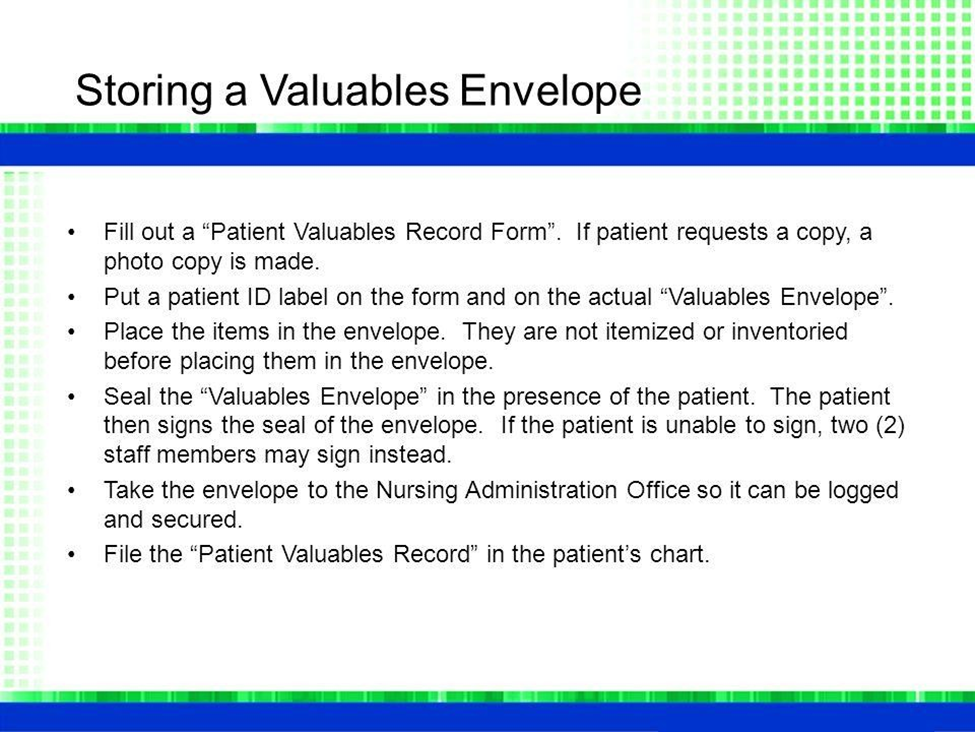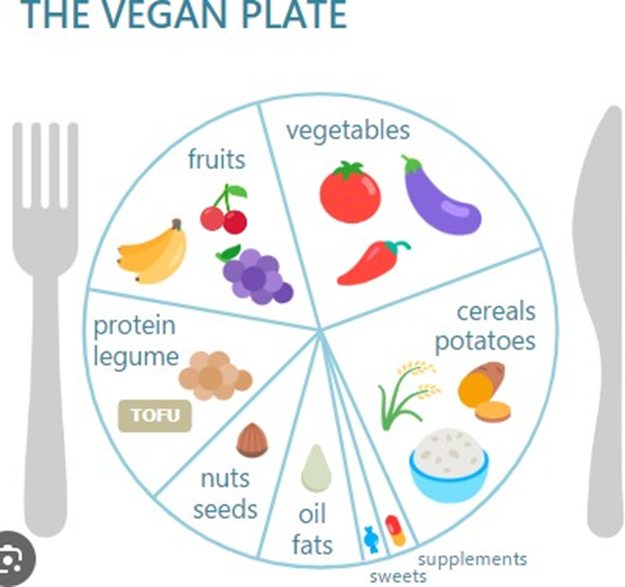A patient admitted to the acute care facility through the emergency department has jewelry and a large amount of money. The most efficient intervention for these valuables would be:
Send them home with a family member.
Lock them in the narcotics cabinet in the nursing unit.
Put them away quickly in the patient's closet.
Place them in a valuables envelope and have them locked in the agency safe.
The Correct Answer is D
A. Sending valuables home with a family member might not be feasible or safe in an emergency situation.
B. Locking valuables in the narcotics cabinet is not appropriate; this cabinet is typically designated for medication storage, not personal items.
C. Placing valuables in the patient's closet doesn't ensure their security; it's not a designated secure area.
D. Using a valuables envelope and securing them in the agency safe ensures the security of the patient's belongings while they are hospitalized.

Nursing Test Bank
Naxlex Comprehensive Predictor Exams
Related Questions
Correct Answer is B
Explanation
A. Rice is a staple carbohydrate in Asian diets but is not a significant source of protein.
B. Soybeans are commonly used in Asian cuisine and are an excellent source of plant-based protein.
C. While mushrooms are utilized in Asian cooking, they are not primarily considered a significant protein source.
D. Bamboo shoots are a vegetable commonly used in Asian dishes but are not notably high in protein.
Correct Answer is B
Explanation
A. Lactose intolerance is more related to the absence of the enzyme lactase, commonly found in individuals who have a reduced ability to digest lactose (milk sugar), regardless of their dietary choices.
B. Vegan diets may lack sufficient iron intake as plant-based sources of iron (non-heme iron) are not as readily absorbed by the body compared to heme iron found in animal products. This can put vegans at a higher risk of iron deficiency.
C. Diabetes risk is influenced by various factors, including genetics and lifestyle, rather than specifically by following a vegan diet.
D. Pneumonia risk is not directly associated with following a vegan diet but can be influenced by overall health, immune function, and exposure to pathogens.

Whether you are a student looking to ace your exams or a practicing nurse seeking to enhance your expertise , our nursing education contents will empower you with the confidence and competence to make a difference in the lives of patients and become a respected leader in the healthcare field.
Visit Naxlex, invest in your future and unlock endless possibilities with our unparalleled nursing education contents today
Report Wrong Answer on the Current Question
Do you disagree with the answer? If yes, what is your expected answer? Explain.
Kindly be descriptive with the issue you are facing.
